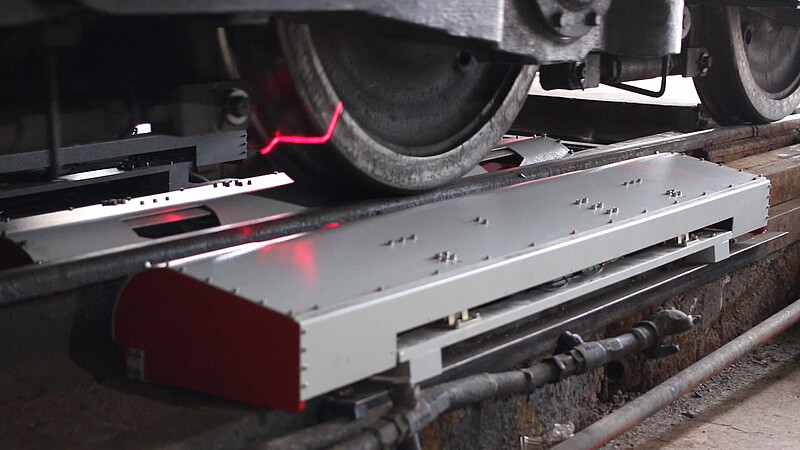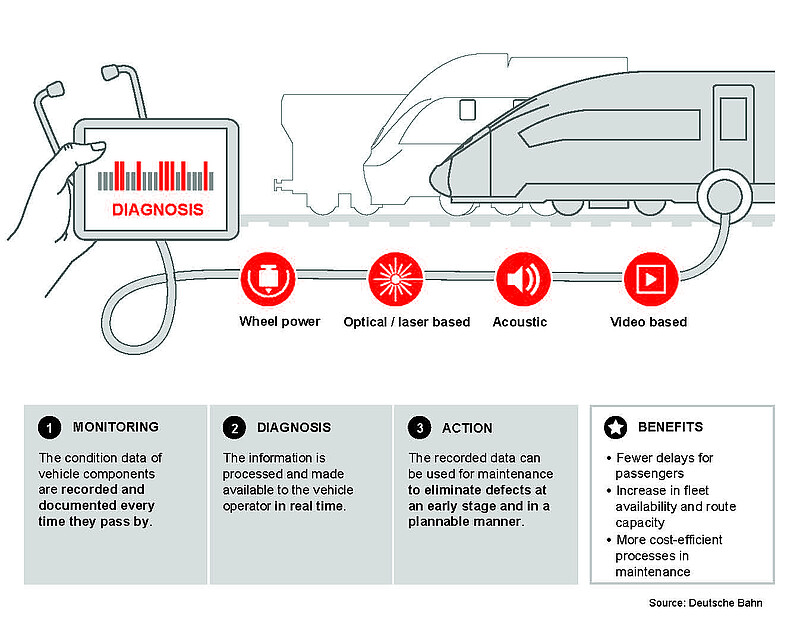Wayside Train Monitoring System (WTMS)
To ensure that everything in rail operations runs as safely and smoothly as possible, trains and track systems are regularly inspected and maintained by experts at fixed intervals. To optimise maintenance processes, we also use so-called Wayside Train Monitoring Systems (WTMS). In Germany, WTMS is also referred to as trackside train monitoring, in Switzerland as train control centres (ZKE), in Austria as checkpoints. Their task is to record the technical condition of passing trains.
With WTMS, both safety-critical and non-safety relevant conditions can be recorded. Systems that serve to detect safety-critical states include
– hot box and fixed brake detection systems to detect damaged axle bearings and seized brakes
– wheel force measuring systems, which detect unevenly distributed loads and geometric wheel defects
– clearance gauges to detect infringements of the structure gauge or antennas protruding into the overhead contact line
– impact detection equipment to detect hanging parts that can damage the track infrastructure, including switches and balises (part of the control and safety system)
– equipment for derailment detection, which detects derailed wheelsets.
Early detection of damage
The data from wayside train monitoring systems can not only detect safety-critical conditions when they occur, but also prevent them from occurring. They prove their value in condition-based and predictive maintenance. Continuous condition monitoring allows damage to be detected earlier and thus usually more cost-effectively remedied. From the point of view of the railway network operator, such use of the data increases the availability of train paths and the punctuality of trains, since fewer wagons have to be stopped due to safety-relevant defects.
The track is also less stressed by damaged wheelsets. For example, a single wheel defect strikes the rail every 3 m, resulting in noise, vibrations and increased load on the bearings. A study by the management consultants Roland Berger estimates that the evaluation of WTMS data can reduce maintenance and repair costs by 20%.

© Althen
WTMS diagnostic procedures
Different diagnostic procedures can be used with WTMS:
– imaging procedures (cameras): complete inspection of the vehicle condition, documentation of the brake pad, vehicle identification (UIC number), pantograph recording
– optical/laser based: wheel profile, ISO examination, axle position/carriage run
– acoustic: wheelset bearing, wheel force diagnosis, wheel profile/diameter, load distribution, concentricity
– infrared: for temperature monitoring
– RFID: for vehicle identification
Recommended specialist books:
Rees, Dagmar, Digitalisierung in Mobilität und Verkehr
https://www.pmcmedia.com/en/all-titles/rail/262/digitization-in-mobility-and-transport
Theeg, Gregor/Vlasenko, Sergej (Eds.), Railway Signalling and Interlocking
https://www.pmcmedia.com/en/all-titles/rail/348/railway-signalling-and-interlocking

